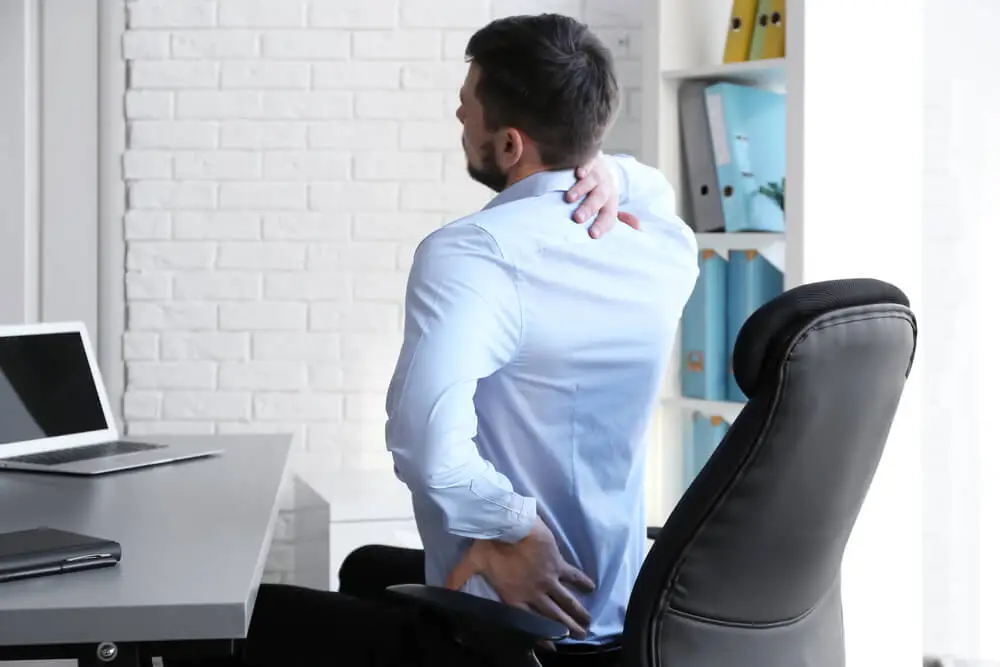Do you regularly suffer from both a stiff neck and lower back pain? Did you know that the two conditions may be related — whether you’ve endured a direct injury or not? While these are two distinct areas of the body, the common link is the spine- and the age-related conditions that can affect it. Neck and back pain can also be related because a problem in one area of the body can lead to changes in posture and movement that negatively affect another seemingly unrelated area.
What can cause a stiff neck and lower back pain in connection with one another?
Our spine is a complex arrangement of bones, joints and connective tissue that support the upper body while protecting the central nervous system. As we get older, these parts tend to degenerate, leading to conditions like arthritis and herniated and bulging discs that can lead to both localized and radiating pain.
While a stiff neck and lower back pain can be caused by separate diagnosable injuries, the underlying factors can be highly related. For example, someone with arthritis in the lower back is likely to also have it develop in the upper spine, leading to a stiff neck. Other possible causes of both neck stiffness and lower back pain include:
- Weakened muscles — Muscles that are weak in the back, neck, shoulders and abdomen can increase the risk of injury. Ensuring that muscles throughout the body are strong enough to support the head, neck, and back is integral to preventing a stiff neck and lower back pain.
- Herniated disc — People who have a slipped or herniated disc may also experience both neck and back issues simultaneously. This is because when someone’s spinal disc becomes herniated, the jelly in the middle of the vertebrae slips out of its interior and places pressure on the areas around the spinal cord, including the neck and lower back.
- Obesity — Obesity is another one of those conditions that can cause neck and back discomfort, but for reasons similar to the herniated discs. Excess weight can place extra pressure on the vertebrae in the spinal column.
- Abnormal growth — Any growths that are abnormal, like an abscess or tumor, can place pressure on nerves, vertebrae, muscles, ligaments and other tissue. This can result in a stiff neck and lower back pain problems that are connected to one another.
Physical therapy for a stiff neck and lower back pain
Physical therapy can be a highly effective form of treatment for patients dealing with a stiff neck and lower back pain. By learning more about the specific therapeutic options a therapist can provide, you can be more involved with your care.
What will a physical therapist do during PT sessions to address the connection between a stiff neck and lower back pain?
A physical therapist has a number of methods to evaluate any potential connection between neck stiffness and a lower back condition. By examining posture, performing movement tests, asking questions about your symptoms, and reviewing your medical history, your therapist can work with you to determine the best course of treatment.
The primary goal of physical therapy for neck and back pain is to improve function and relieve pain by taking pressure off the spine and promoting better flexibility. This can be accomplished with treatment options including:
- Strengthening exercises.
- Posture training.
- Instruction on lifestyle changes and at-home treatments.
By working together, you and your therapist can develop an effective, comprehensive treatment plan that offers long-term relief.
Work with the neck and back pain experts at Continuum Wellness
At our state-of-the-art clinic in Apache Junction, Arizona, we provide compassionate, patient-centered care to everyone who comes to us for relief. We believe in one-on-one treatment and a truly collaborative approach to physical therapy.
Contact us today to learn more about how we can assist with your pain or to schedule your initial appointment.

